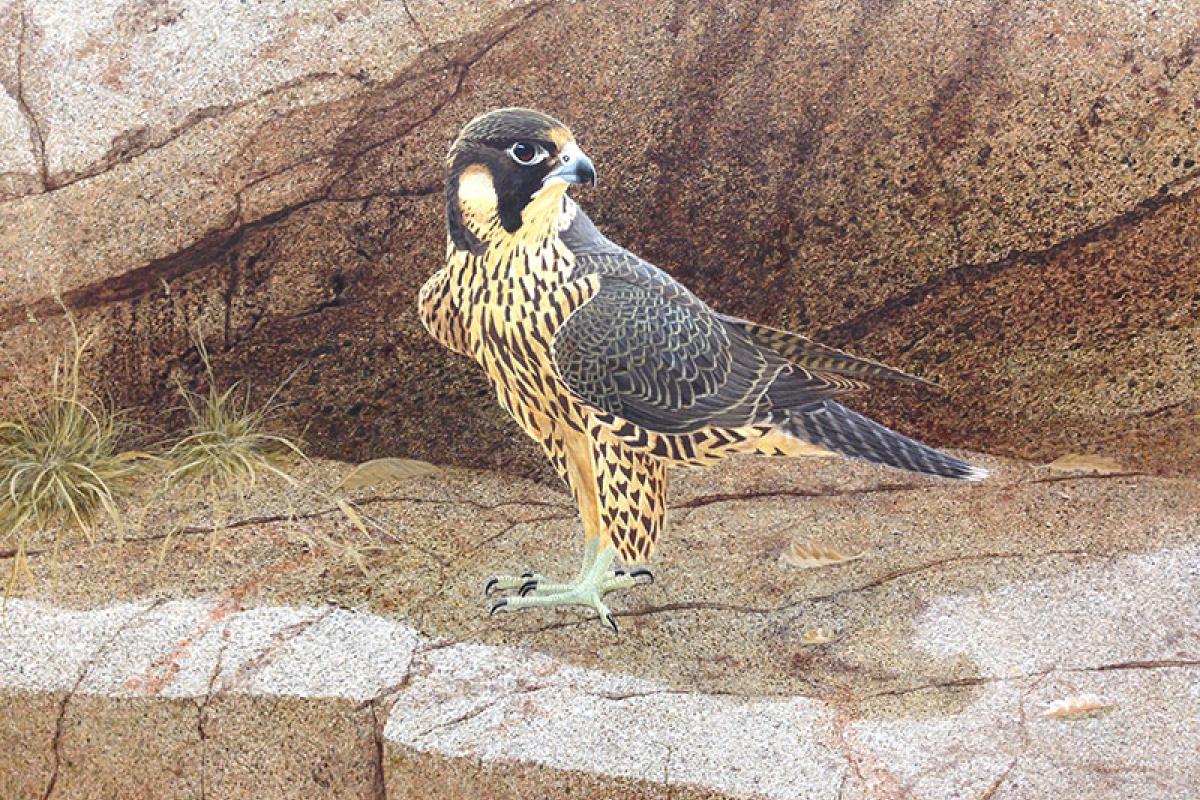August 3-27
First Friday reception Aug. 5, 6:30-9pm
Artist talk Saurday, Aug. 27 at 3pm
History tours with John Moore (about 30 minutes) every Tuesday between 1 and 4pm. Tuesdays are free admission!
John Moore still remembers his high school art teacher, Dr. Schmidt. “He was from the old school…you did not sit down in his art class.” It was classes like Dr. Schmidt’s and those offered on Saturday mornings at the Art Institute of Chicago that cultivated John’s appreciation for the visual arts from an early age. He grew up in Cicero, Illinois, an inner suburb of Chicago. At the time there was still a fair amount of undeveloped property that was natural grassland. John spent much of his youth exploring that urban prairie and developed a passion for the outdoors and wildlife.
These two interests—art and natural history—have stayed with him ever since. After ten summers in the 1960s and ‘70s working as a ranger in Rocky Mountain National Park, John got a job as a biology teacher at Wheat Ridge High School outside of Denver, where he taught for 24 years. It was during this time that he began collecting bird art, initially from the Denver galleries. Today he has upwards of 100 works by historic naturalists like John James Audubon, modern masters like Don Malick, and local artists like Art Center member David Mosier. About 40 of these paintings, drawings, and prints will be on display as part of the Art Center’s exhibition A Wild Still.
Also featured in A Wild Still are photographs by Joann Brennan. The stillness in Brennan’s work is two-fold: captured by the camera, the animals she photographs—mostly birds, but also mammals—are often depicted in the clutches of the humans studying them, or simply lifeless. As an artist, educator, and environmentalist, Brennan’s work draws attention to the positive and the negative encompassed by humans’ interactions with nature, particularly wildlife. Whether shadowing hunters or conservationists, Brennan’s frank compositions transport mundane activities into the realm of the peculiar. Her photos from behind-the-scenes of natural history museums produce the disconcerting effect of seeing once-animated creatures laid flat for research and taxidermy, surrounded by scientific instruments in the unnatural habitat of a lab. These images are part of her series Managing Eden, a project 20 years in the making. Brennan will speak at the Art Center on Saturday, August 27 at 3pm.
Seeing wildlife frozen in time, as it is in both Brennan’s work and Moore’s collection, has the inverse effect of reminding the viewer of the harsh reality outside the gallery. Time and human development march on with severe implications for these species. If steps are not taken to preserve and protect, the animals represented in A Wild Still may come to exist only in museums. Yet both Brennan and Moore remain optimistic about the future of wildlife conservation. “When I started photographing,” says Brennan, “I had this idea that nature was lost…as I photographed and met people, I realized that there are amazing experts out there, working hard to try to find this balance between human concerns and wild populations.”
Image: Joann Brennan, Type Specimen, Greater Sage Grouse

